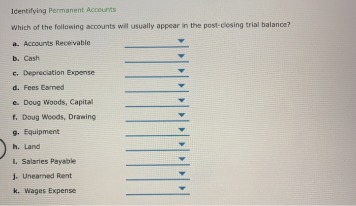Operating Profit vs Net Income
A company can increase its operating profit by reducing the cost of goods and services it sells. Gross profit, operating profit, and net profit are the three levels of profitability https://kelleysbookkeeping.com/partnership-income-tax-forms/ of a business. These are classified as non-operating revenues and non-operating expenses. Companies try to increase their revenue while keeping operating expenses under control.
- Consequently, operating profit is also referred to as earnings before interest and tax.
- All three financial metrics are located on a company’s income statement and the order in which they appear help show the relationship to each other and their importance.
- However, like gross profit, operating profit does not account for the cost of interest payments on debts, tax expense, or additional income from investments.
- Using Zoho Books, you can easily generate real-time business overview reports like P&L statements to evaluate the values of gross and net profit.
For a SaaS business, sales revenue (or net sales) typically includes income from subscription fees and other add-on features. It doesn’t include money from non-business activities (like the sale of an asset) or from outside investment. To calculate the net profit, you have to add up all the operating expenses first. Then you add the total operating expenses, including interest and taxes, and deduct it from the gross profit. In the above example, the total operating expenses including taxes and interest are $110,000. Net Profit is the surplus (positive value) remained with the company after deducting all expenses, interest, and taxes.
What is net profit?
Investors typically want to know how much profit is being generated on a per-share basis because it shows how well a company has invested those funds that were raised from issuing stock. A higher earnings per share means a company is growing profits based on the number of stock shares that they’ve issued. EPS is helpful because it can be used to compare the profit of companies in different industries since it’s a universal metric that all publicly-traded companies use for measuring profitability. EPS also shows how well a company’s management team is at investing in the long-term financial viability of the company.
- To calculate net profit, you start with total revenue (also known as your top line), add all positive cash flow amounts, and subtract all negative cash flow amounts.
- All additional income from secondary operations or investments and one-time payments for things such as the sale of assets are added.
- However, each metric represents profit at different parts of the production cycle and earnings process.
- With Mosaic, you can stay on top of these financial metrics and get accessible and effective financial analysis.
- Gross profit is the profit a business makes after subtracting all the costs that are related to manufacturing and selling its products or services.
Net profit is important because it reflects the overall profitability of the business. It does not take into account indirect costs and expenses incurred in running the day-to-day operations of a business. Your gross profit describes the money you make after expenses on your products.
Operating Expenses
Operating profit margin is the ratio of operating profit to total revenue, and it is used to measure a company’s profitability and efficiency. Operating profit is essential because it measures the profitability of a company’s core business operations or the main way that a company generates revenue. Net Gross Profit, Operating Profi Vs Net Income profit is the amount of money left after all expenses and taxes are deducted from revenue. It is often called the “bottom line” since it appears at the bottom portion of the income statement. To calculate gross profit, we will use the revenue from normal business operations, which is operating revenue.

Operating profit takes the profitability metric a step farther to include all operating expenses, including those included in the gross profit calculation. As a result, operating profit is all of the profit generated except for interest on debt, taxes, and any one-off items, such as a sale of an asset. This is why operating income is also referred to as earnings before interest and taxes (EBIT). Operating profit represents the earnings power of a company with regard to revenues generated from ongoing operations. Net income is the result of all costs, including interest expense for outstanding debt, taxes, and any one-off items, such as the sale of an asset or division.
What Is Operating Profitability on a Balance Sheet?
If a company doesn’t have non-operating revenue, EBIT and operating profit will be the same figure. There are a few key ways to improve operating profit, which include reducing the cost of goods, improving inventory management, boosting staff productivity, and increasing the average order value. Investors use operating profit margin to determine how much a company earns in terms of operating profit, thus ensuring efficiency and profitability. However, it can also be lumped together with operating expenses when reflected in income statements. Additional income streams, such as short-term investments and the sale of assets, are also added to operating profit to arrive at the net profit.

Deixe uma resposta